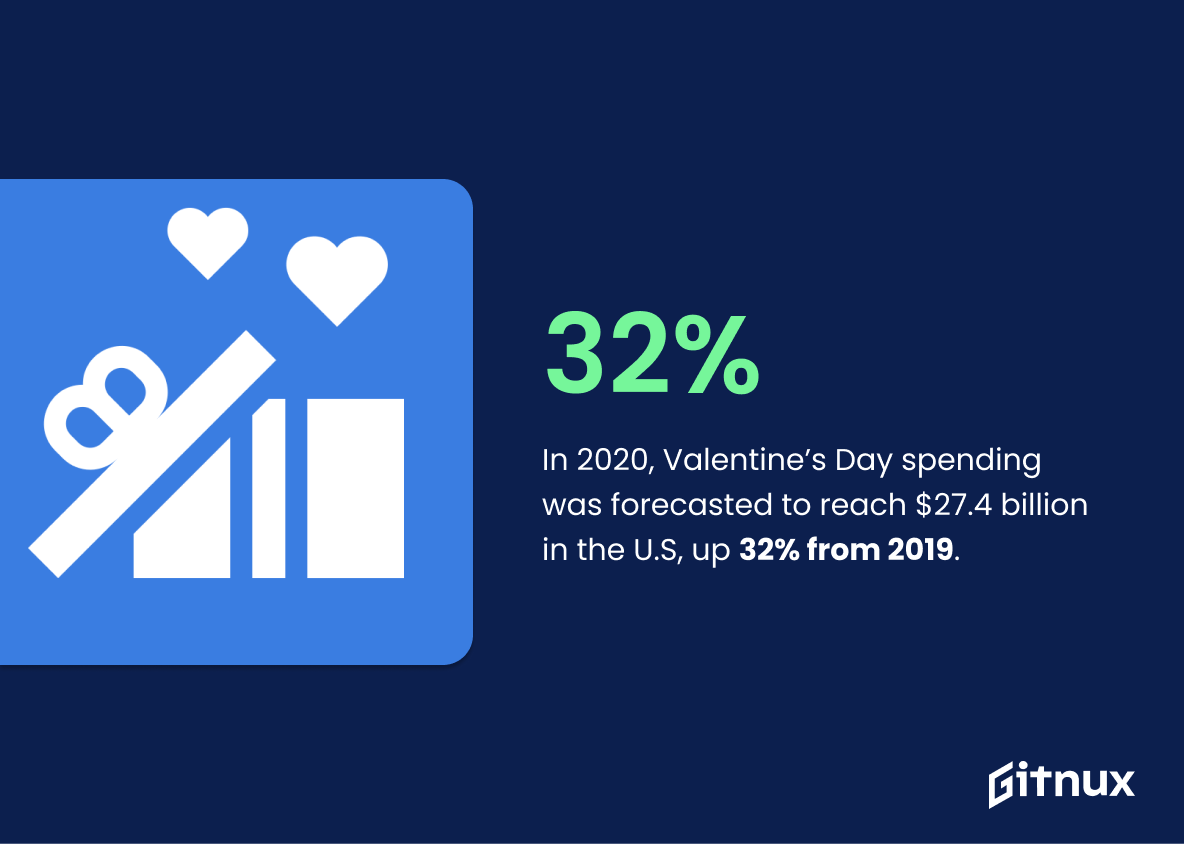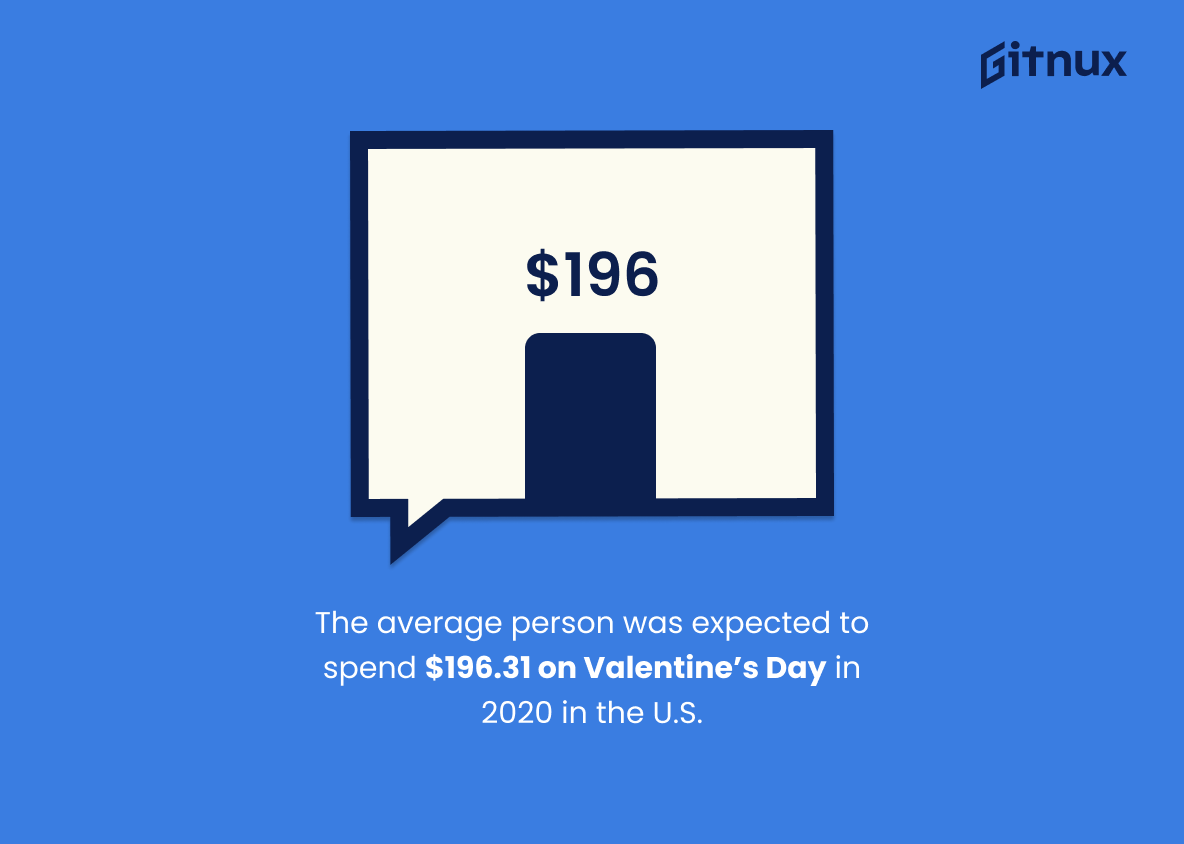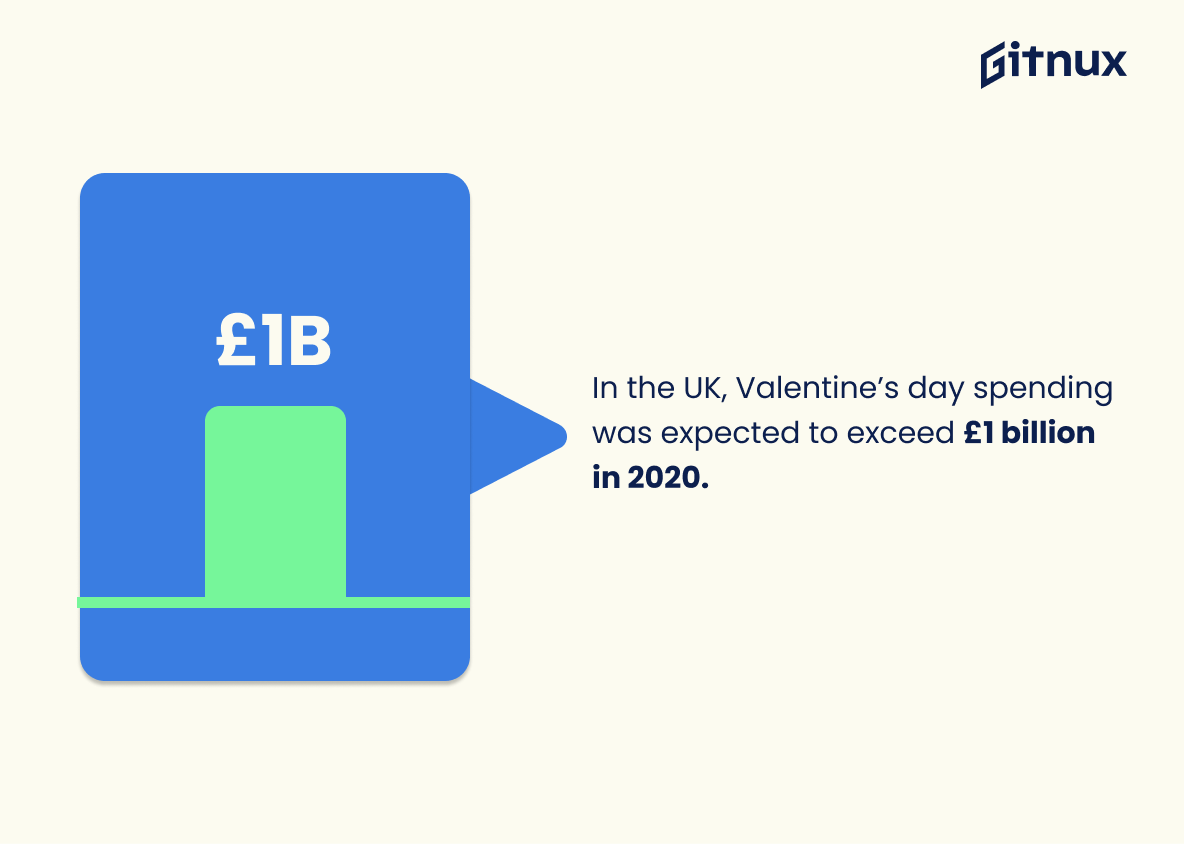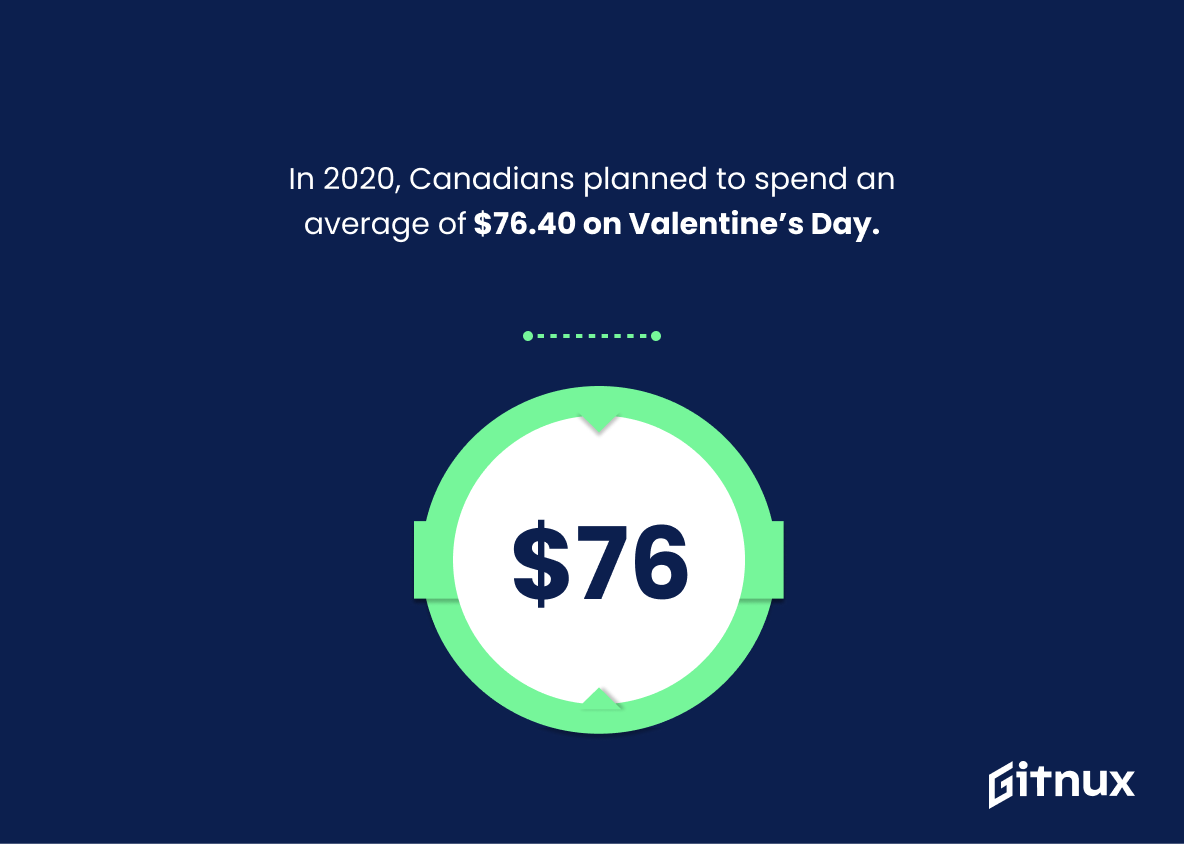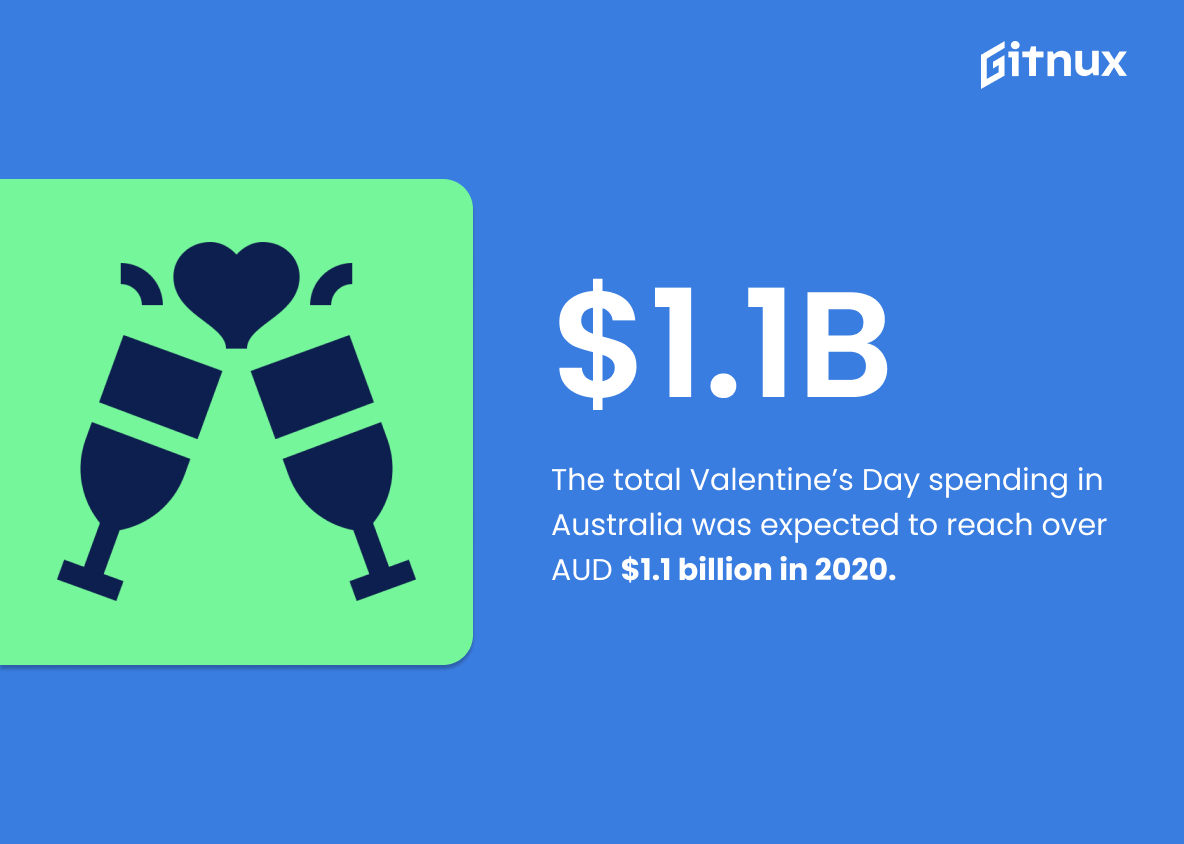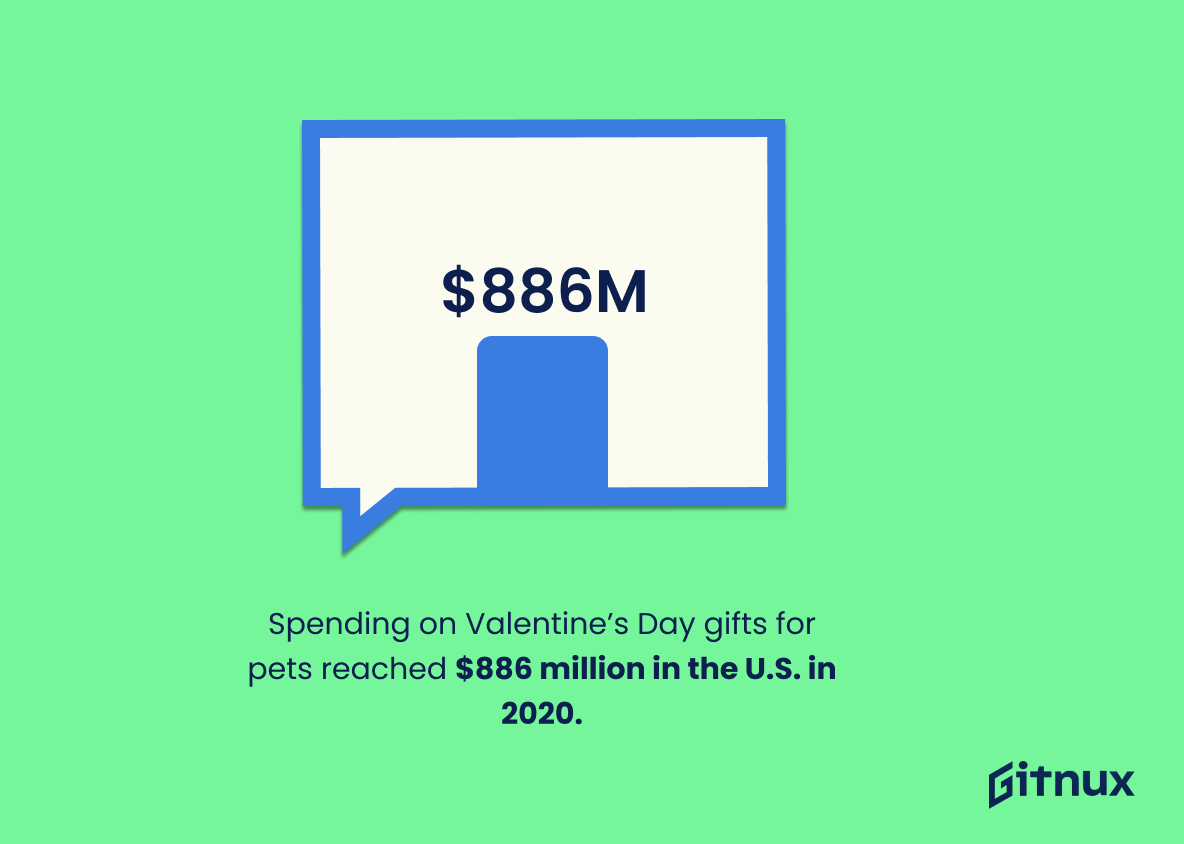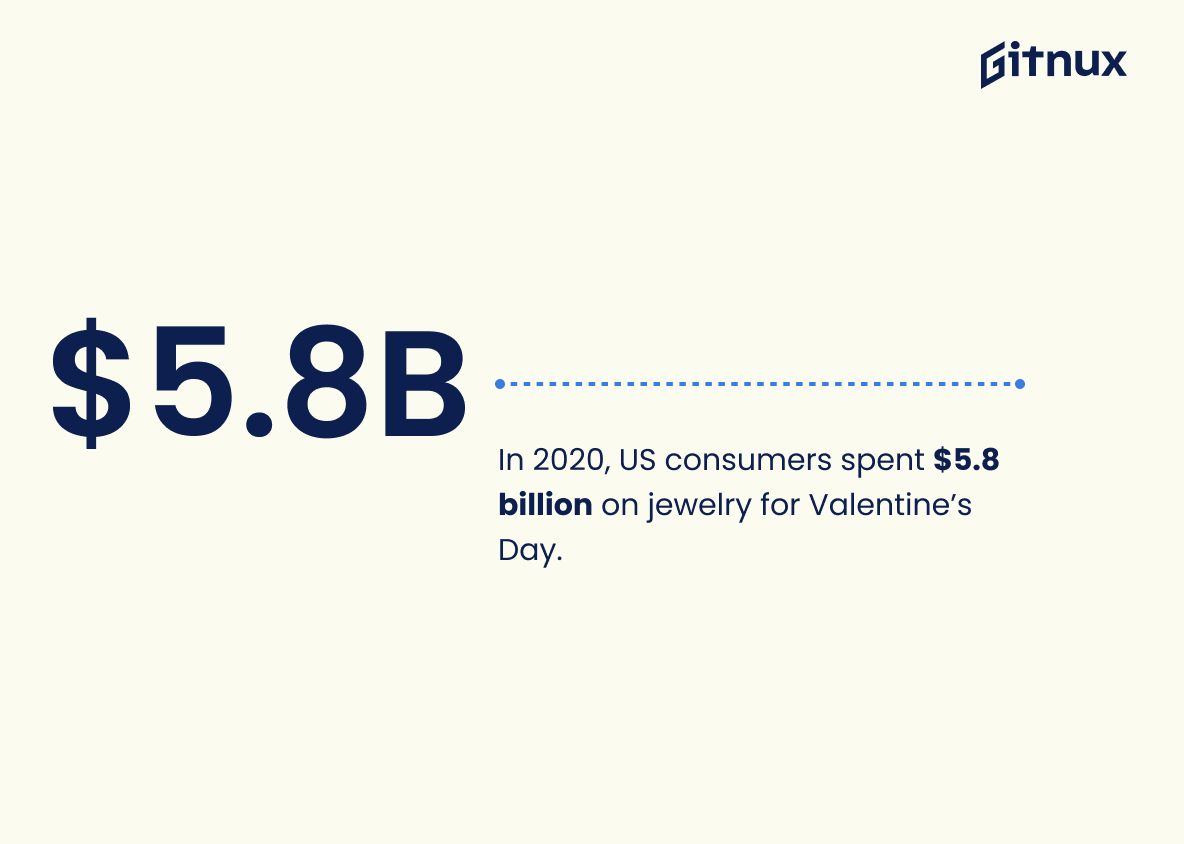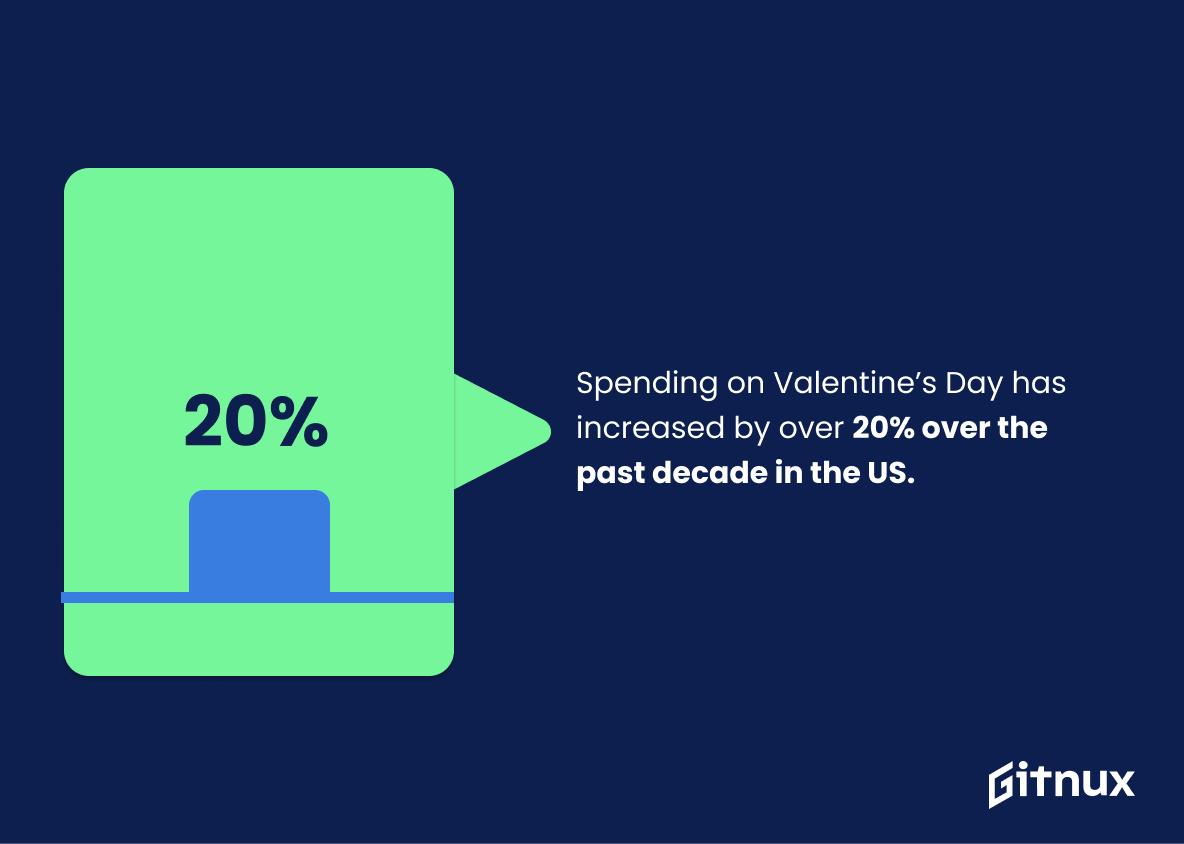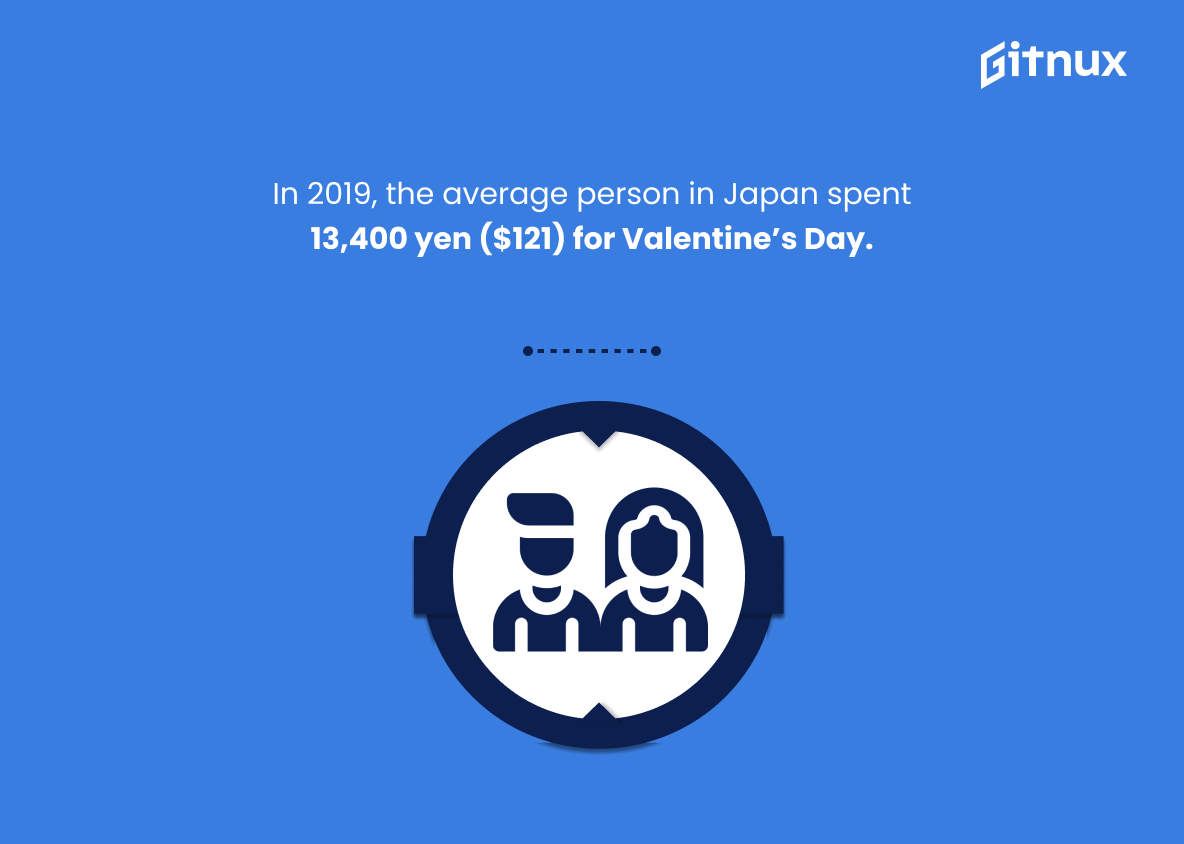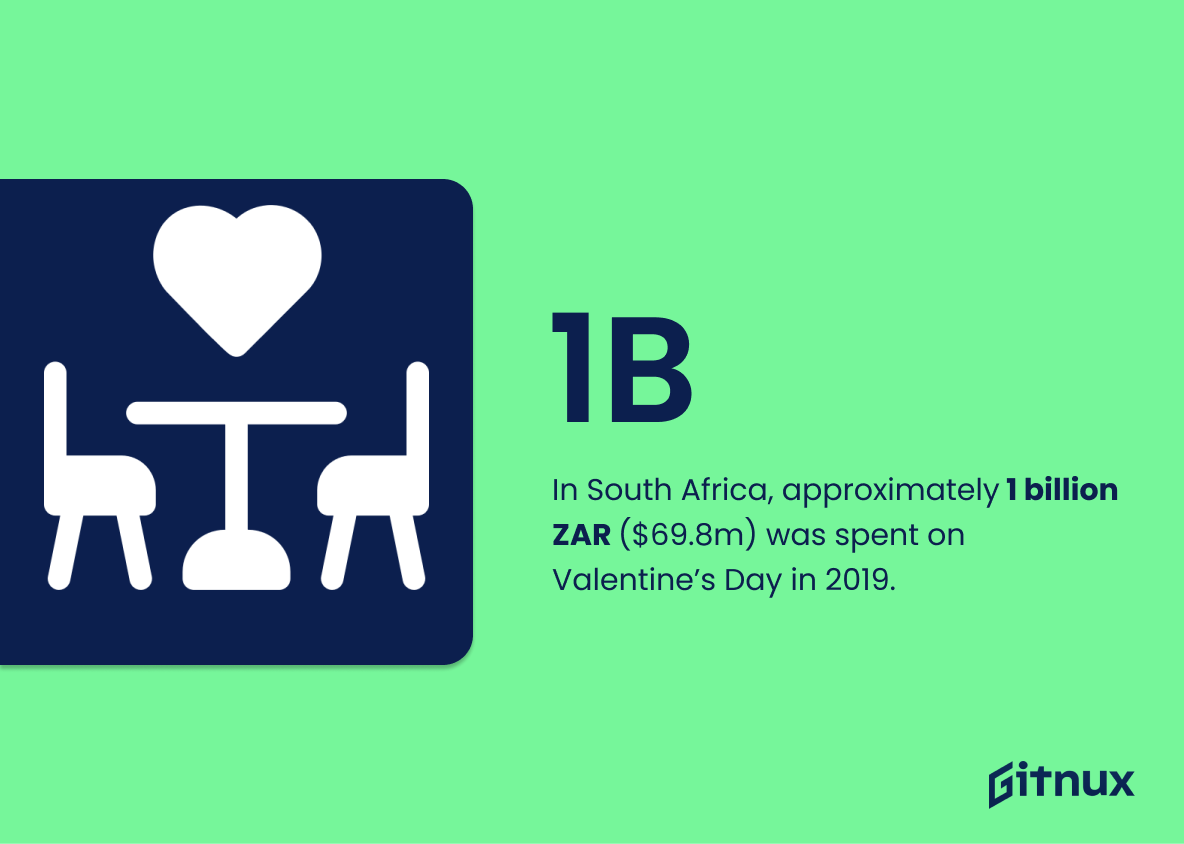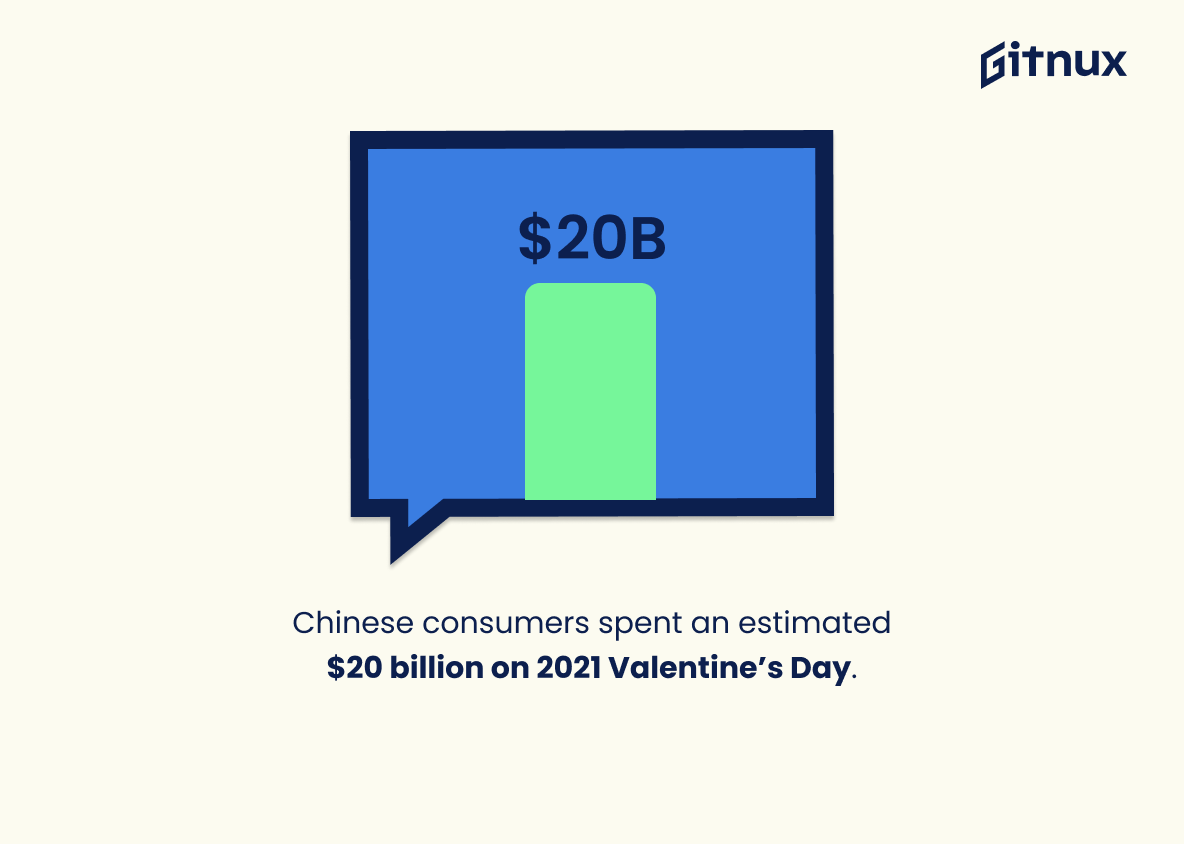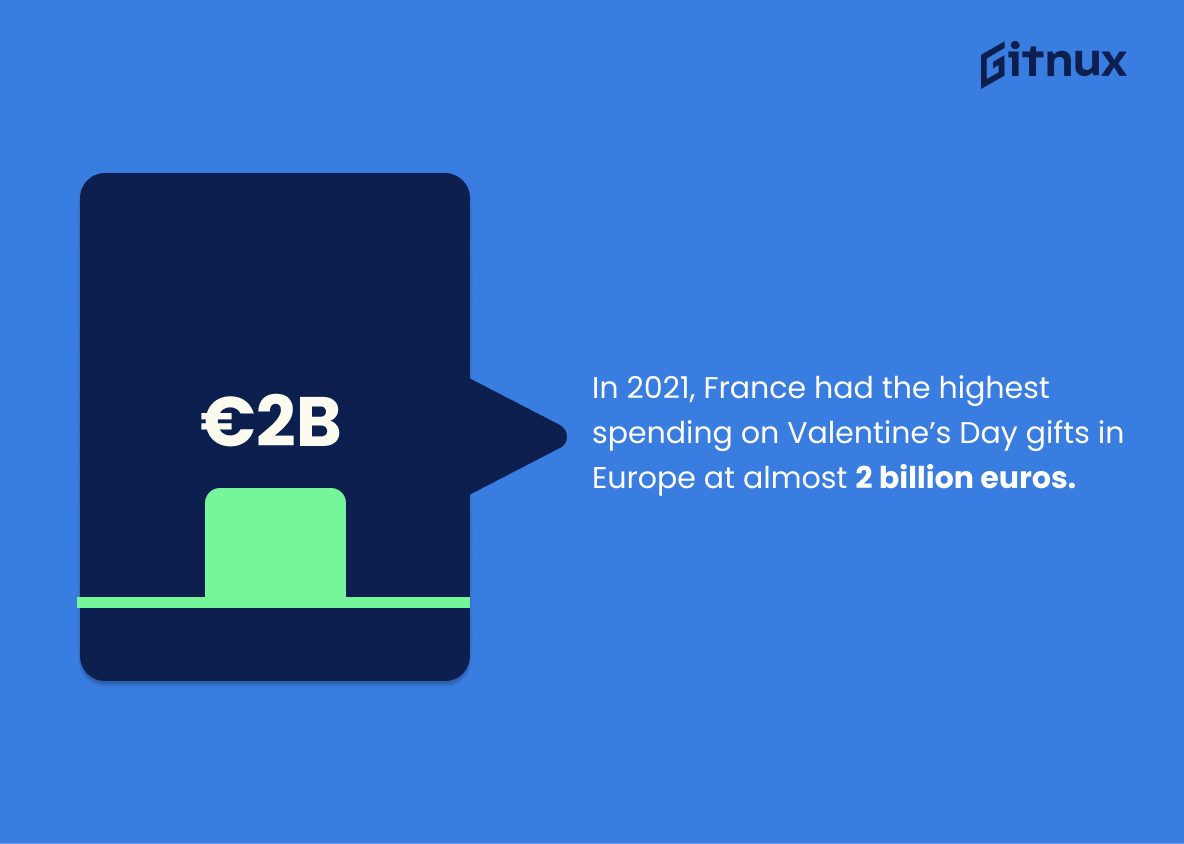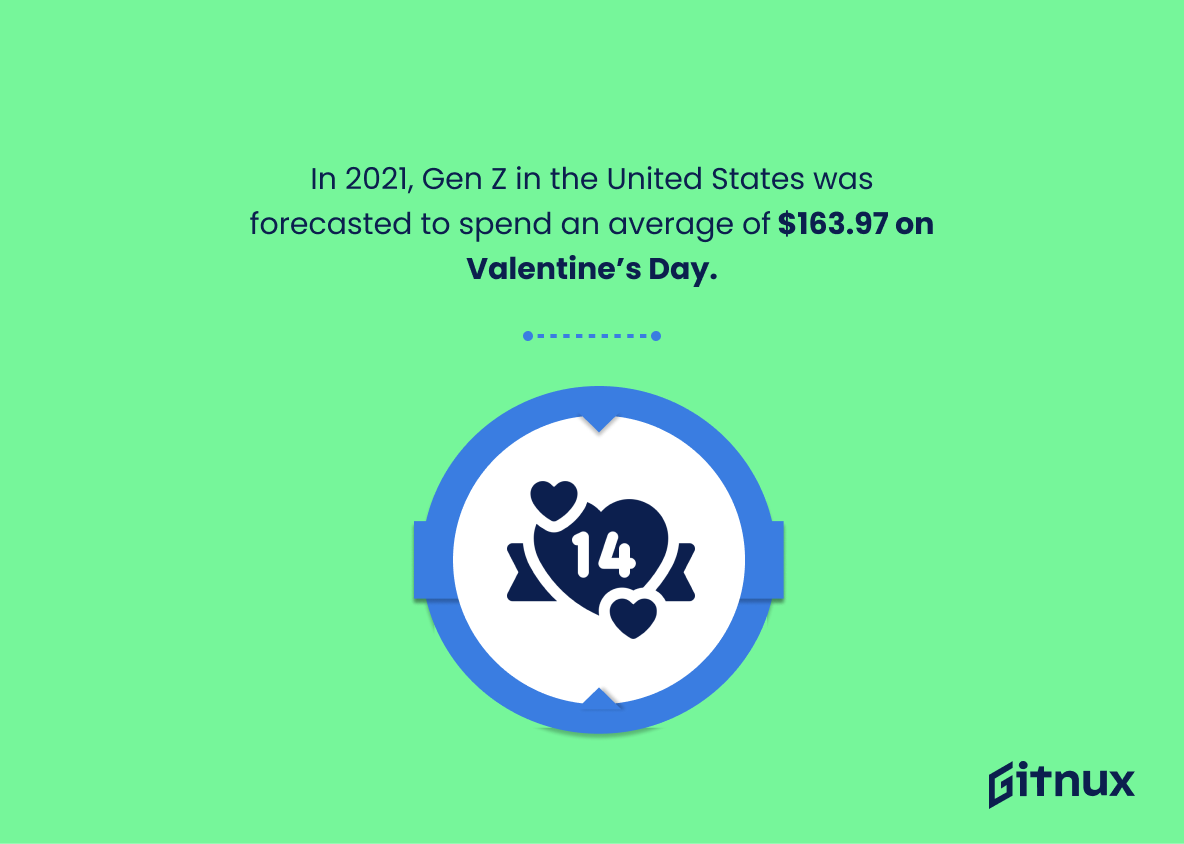As we welcome the month of February, the businesses around the globe count down to one of the most commercially celebrated days of the year – Valentine’s Day. This day of love not only ignites the hearts of couples worldwide but also sets the cash registers ringing in many sectors of the economy. Through this blog post, we delve into a fascinating world of data and detail the dynamics of Valentine’s Day spending statistics.
If you’re a business owner, pay attention, as understanding these figures might just prove the key to capitalizing on the romance-driven holiday. If you’re a consumer, these stats will provide an eye-opening glimpse into the world’s collective attempts to bottle and sell love. Stay tuned, and let’s explore the fiscal underpinnings of the most romantic day of the year.
The Latest Valentine’S Day Spending Statistics Unveiled
In 2020, Valentine’s Day spending was forecasted to reach $27.4 billion in the U.S, up 32% from 2019.
Peeling back the layers of the ‘love economy,’ the notable increase in Valentine’s Day spending in the U.S., which was poised to touch a staggering $27.4 billion in 2020, 32% more than the previous year, provides a fascinating dimension to the blog post. This leap subtly brings to light how the romantic sentiment associated with Valentine’s Day continues to be an ever-strong propelling force for economic activities and consumer culture.
Not only it signifies the importance of this event in the retail calendar, but also underlines a surging trend of lavish spending, highlighting a potential for businesses to tap into. Moreover, it hints at deeper societal trends and shifts, adding depth and context to our understanding of modern love and consumer behaviors. In the panorama of Valentine’s Day Spending Statistics, this paints a vibrant picture of financial splurging against the backdrop of a highly commercialized celebration of love and affection.
The average person was expected to spend $196.31 on Valentine’s Day in 2020 in the U.S.
In the dazzling neon landscape of Valentine’s Day economics, this little factoid—a $196.31 expected spend per person—is a glittering lighthouse. It’s a friendly guide into understanding the magnitude of this love-infused splurge fest. By waving this monetary flag, it illustrates the pulsing heart of Valentine’s consumerism and the willingness of individuals to dig deep into their pockets for the name of Cupid.
This $196.31 isn’t just a number; it’s an emblem of financial commitment to love, a reflection of cultural value, and a key piece in the larger economic puzzle of romantic expenditure. Take it, hold it close, and peek into the true fiscal measure of Valentine’s Day in the U.S. in 2020.
In 2020, men planned to spend an average of $291.15 for Valentine’s Day, while women planned to spend $106.22.
The intriguing contrast found in the 2020 Valentine’s Day spending forecast between men and women possesses a profound significance for our understanding of consumer patterns. This divergence, with men intending to shell out an average of $291.15 compared to women’s $106.22, holds the key to appreciating an implicit gender bias in spending habits during this annual celebration of love and affection.
Such information is essential in crafting effective marketing strategies, indicating that businesses might reap higher profits by tailoring their Valentine’s day offerings towards male customers. Moreover, it signals a broader, societal discussion on gender roles and expectations encapsulated within our spending behavior.
In the UK, Valentine’s day spending was expected to exceed £1 billion in 2020.
Delving into the lavish love-fest of the UK citizens, we witness a staggering fact – the expected Valentine’s Day expenditure in 2020 was projected to edge past £1 billion. Now, why does this monetary confession of emotion carry such weight in a blog post revolving around Valentine’s Day Spending Statistics?
Pausing at this monumental figure provides us remarkable insights into the escalating consumerism attached to this day of love. It paints a picture of a society where grand romantic gestures, often quantified in monetary terms, are a norm — indicative of the thriving gift industries, restaurants and getaways making massive profits from this annual celebration.
Moreover, such an impressive spending prediction also holds up a mirror to the disposable income and buying power of UK citizens. It cascades over the ripple effects in the economy while concurrently showcasing the scale at which businesses can capitalize on emotionally charged occasions in the realm of sales and marketing.
In a nutshell, this eye-popping prediction of Valentine’s Day spending is not just a cold, hard numeric fact but a fascinating remark on the socio-economic patterns and business opportunities in the UK.
In 2020, Canadians planned to spend an average of $76.40 on Valentine’s Day.
Reflecting on the statistic, it gives a striking insight into the societal and economic behaviors related to love and affection in Canada. The figure of $76.40, as an average planned spending on Valentine’s Day, illuminates the significant amount of emotional and financial investment Canadians are willing to make on this special day. In a blog post about Valentine’s Day Spending Statistics, this statistic serves as a compelling focal point to gauge consumers’ expenditure trend during this passionate season.
It can pave the way for discussing and analyzing such spending habits, seasonal economic influx, and even throwing a spotlight onto which sectors likely see a significant boost during Valentine’s Day. It isn’t just a number; it’s a gateway to a deeper understanding of the economic landscape.
The total Valentine’s Day spending in Australia was expected to reach over AUD $1.1 billion in 2020.
Valentine’s Day isn’t just about the heartfelt letters and rosy romances – it’s also an economic powerhouse. The anticipated expenditure reaching over AUD $1.1 billion in 2020 alone puts into perspective the financial influence of love and affection. Imagine this: in Australia alone, lovebirds splashed out enough money to construct over three Sydney Opera Houses.
Such a staggering sum underlines the substantial commercial impact of this romantic holiday, and underscores its role as a major retail event. Highlighting this data in a blog post about Valentine’s Day spending statistics would truly illuminate the financial magnitude of the festival of love.
Spending on Valentine’s Day gifts for pets reached $886 million in the U.S. in 2020.
Shedding light on the magnitude of love people harbor for their pets, it’s intriguing to observe that spending on Valentine’s Day gifts for pets surged to a whopping $886 million in the U.S. alone in 2020. This hefty sum underlines not just the potent influence of Valentine’s Day on consumer behavior, but also accentuates the evolving relationship dynamics between owners and pets.
Demonstrating impressive economic influence, this statistic redefines the discussion around Valentine’s Day spending, asserting that romance isn’t the only driving force behind this sentimental holiday. Pets too command a significant share of the spending spree, adding an interesting dimension to the overall narrative surrounding Valentine’s Day expenditures.
In 2020, US consumers spent $5.8 billion on jewelry for Valentine’s Day.
Diving into the ocean of Valentine’s Day spending, the floating jewel we find is the statistic – “In 2020, US consumers shelled out a staggering $5.8 billion on jewelry”. This radiant data point speaks volumes about the sparkling love that the US consumers have for gifting jewelry on Valentine’s day. It flawlessly illustrates the shimmering trend of investment in precious tokens of love during this romantic season.
This grand investment, not only adorns the necks and wrists of the beloved, but also strengthens the backbone of the jewelry industry, substantially contributing to the economy. Grounding this extravagant spend in the economic context of Valentine’s Day, it unveils the robust spending power, changing preferences, and the profound sentimental value attributed to jewelry as gifts. Henceforth, it emerges as a shining and crucial touchstone in a blog post exploring Valentine’s Day spending statistics.
Spending on Valentine’s Day has increased by over 20% over the past decade in the US.
One might marvel at the romantic subtext behind the staggering growth of over 20% in Valentine’s Day spending in the US over the past decade. However, peering through the lens of a statistician, it uncovers a fascinating narrative of socioeconomic trends. This surge in expenditure highlights the burgeoning consumer confidence and discretionary spending power, making it a key indicator of economic buoyancy.
It’s not just bouquets and teddy bears, this data suggests that Americans are more open-handed, signaling an uptick in overall consumerism. In the blog post context, this statistic works as an intriguing preamble, enticing the readers to comprehend the deeply-rooted financial and sociological aspects intertwined with the tradition of Valentine’s Day.
In 2019, the average person in Japan spent 13,400 yen ($121) for Valentine’s Day.
Highlighting the statistic that an average person in Japan spent 13,400 yen ($121) for Valentine’s Day in 2019 lends intriguing perspective to the blog post about Valentine’s Day Spending Statistics. Firstly, it adds a multicultural depth to the post as it includes data from non-western cultures which have different traditions and spending habits. Secondly, it serves as a robust reference point for readers, allowing them to compare their own spending habits or those of their country to another quite contrasting one.
Moreover, it reflects the economic impact of Valentine’s Day, therefore emphasizing on consumer behavior in different parts of the world during this specific occasion. Furthermore, it showcases the universality of Valentine’s Day, displaying its global reach extending far beyond one region or culture.
In South Africa, approximately 1 billion ZAR ($69.8m) was spent on Valentine’s Day in 2019.
Unveiling the grandeur and economic impact of love in South Africa, we see it burst into full view with an expenditure of approximately 1 billion ZAR, equivalent to a staggering $69.8m USD, dedicated to Valentine’s Day in 2019 alone. Such an impressive figure doesn’t just tug at heartstrings, but serves as a key indicator of consumer behavior, discretionary spending, and the stimulated economic activity initiated by this day of romance.
This level of celebratory expenditure underscores the importance South Africans place on Valentine’s Day, offering invaluable insights for businesses, marketers, and anyone questioning the scale of Saint Valentine’s influence over the ‘Rainbow Nation’. This statistical truth holds a mirror to the power of love translated into economic terms, presenting a fascinating piece in the puzzle of Valentine’s Day Spending Statistics.
Chinese consumers spent an estimated $20 billion on 2021 Valentine’s Day.
Highlighted in the sea of sentiment and romance, the towering figure of $20 billion spent by Chinese consumers during Valentine’s Day 2021 stands as an emphatic testament of the holiday’s immense commercial impact. This estimated expenditure underscores the rising economic power and discretionary spending of China in global markets, making it a valentine heavyweight to reckon with.
When woven into a blog post about Valentine’s Day Spending Statistics, this information illuminates the luxurious scale at which love is monetized, offering a deeper perspective into consumer behavior, cultural preferences in gift-giving, and the increasing influence of western festivals on Chinese spending.
Indian consumers were expected to spend INR 30,000 crores ($4.1 billion) on Valentine’s Day in 2021.
Highlighting such a jaw-dropping amount can certainly underline the massive scale of financial transactions surrounding Valentine’s Day in India. Presenting this magnitude of spending, converted to billions for international readers, emphasizes the growing consumerism associated with the occasion in countries even beyond the traditional Western sphere.
Furthermore, the impressive INR 30,000 crore expenditure happens to offer a testament to the changing cultural and economic trends within Indian society where such traditionally Western holidays are embraced with significant spending. This key point underscores the global spread and economic importance of Valentine’s Day celebrations.
In 2021, France had the highest spending on Valentine’s Day gifts in Europe at almost 2 billion euros.
Delving into the heart of ostensible romantic indulgence, the impressive peak of almost 2 billion euros unfolds as the record amount France lavished on Valentine’s Day gifts in 2021 – the highest in Europe indeed. Translating indulgence into numbers, this data suggests intriguing patterns in spending behavior, accentuating France’s authentic portrayal of love and affection in monetary dimensions.
In the grand tapestry of a blog post about Valentine’s Day Spending Statistics, these figures add a stunning hue, allowing readers to comprehend the economic impacts of holidays like Valentine’s Day and appreciate the cultural differences in celebrating love across various European nations. This French extravagance on tokens of love serves as a hallmark representation of Europe’s Valentine’s fervor offering insightful context, which potentially could influence market strategies, consumer research, and even socio-cultural studies revolving around Valentine’s Day.
In 2021, Gen Z in the United States was forecasted to spend an average of $163.97 on Valentine’s Day.
As we peel back the petals of Valentine’s Day spending trends, a picture of the value, financial and emotional, that Gen Z places on this holiday of love comes into stunning focus. With 2021’s projection of an average $163.97 spend by Gen Z in the United States, there’s a showcase of the high value this young, formidable generation places on expressions of affection.
The impressive figure negates the ingrained stereotype of Gen Z being indifferent to traditional celebrations. This suggests a booming opportunity for brands and marketers who can capture their hearts and wallets with innovative offerings tailored to their preferences. Such a statistic therefore, is an important key to unlocking the economic potential of love in the age of Gen Z.
Conclusion
In summary, Valentine’s Day is clearly more than just a romantic holiday for couples to express their love. It is also a major economic event driving significant consumer spending across various sectors. It’s an annual phenomenon that calls upon businesses to strategically position their offerings to capture a piece of the lucrative Valentine’s Day market, and likewise, consumers should make thoughtful decisions to avoid overspending.
As we continue to adapt to changing economic and social landscapes, perhaps the most poignant takeaway from these statistics is that love, in all its forms, remains a driving force behind our actions and decisions, fueling commerce on a grand scale. Remember, Valentine’s Day is not just about spending; it’s an opportunity to express feelings and create meaningful experiences. Let the love flow, but let it flow wisely.
References
0. – https://www.www.statista.com
1. – https://www.www.npd.com
2. – https://www.www.insider.com
3. – https://www.www.retail-insider.com
4. – https://www.www.indiantelevision.com
5. – https://www.www.businessinsider.co.za
6. – https://www.www.marketwatch.com
7. – https://www.www.barrons.com
8. – https://www.www.finder.com.au
9. – https://www.qz.com
10. – https://www.www.cnn.com
11. – https://www.www.usatoday.com
12. – https://www.mainichi.jp
13. – https://www.nrf.com
